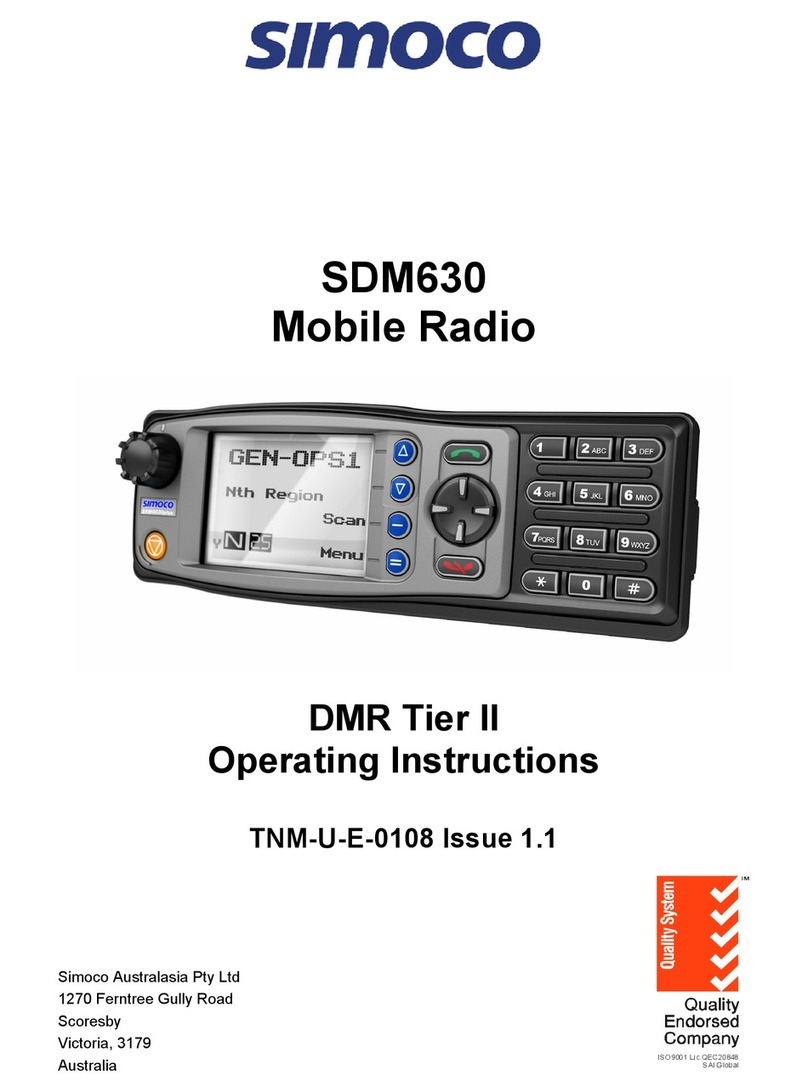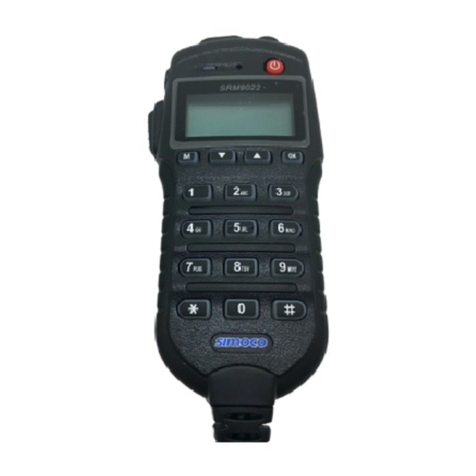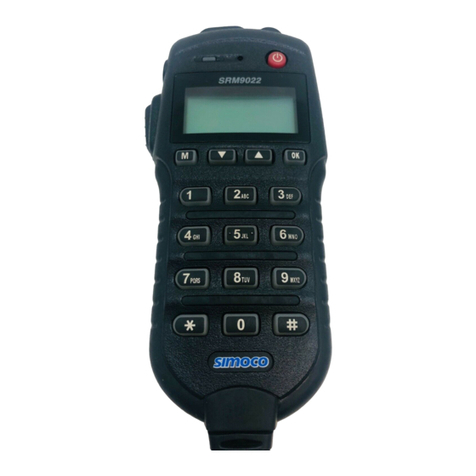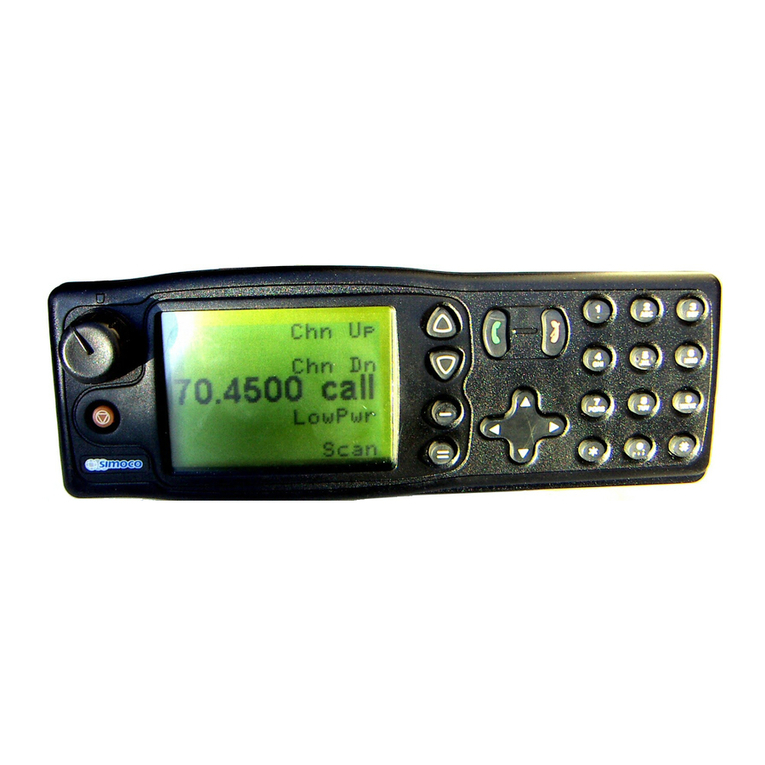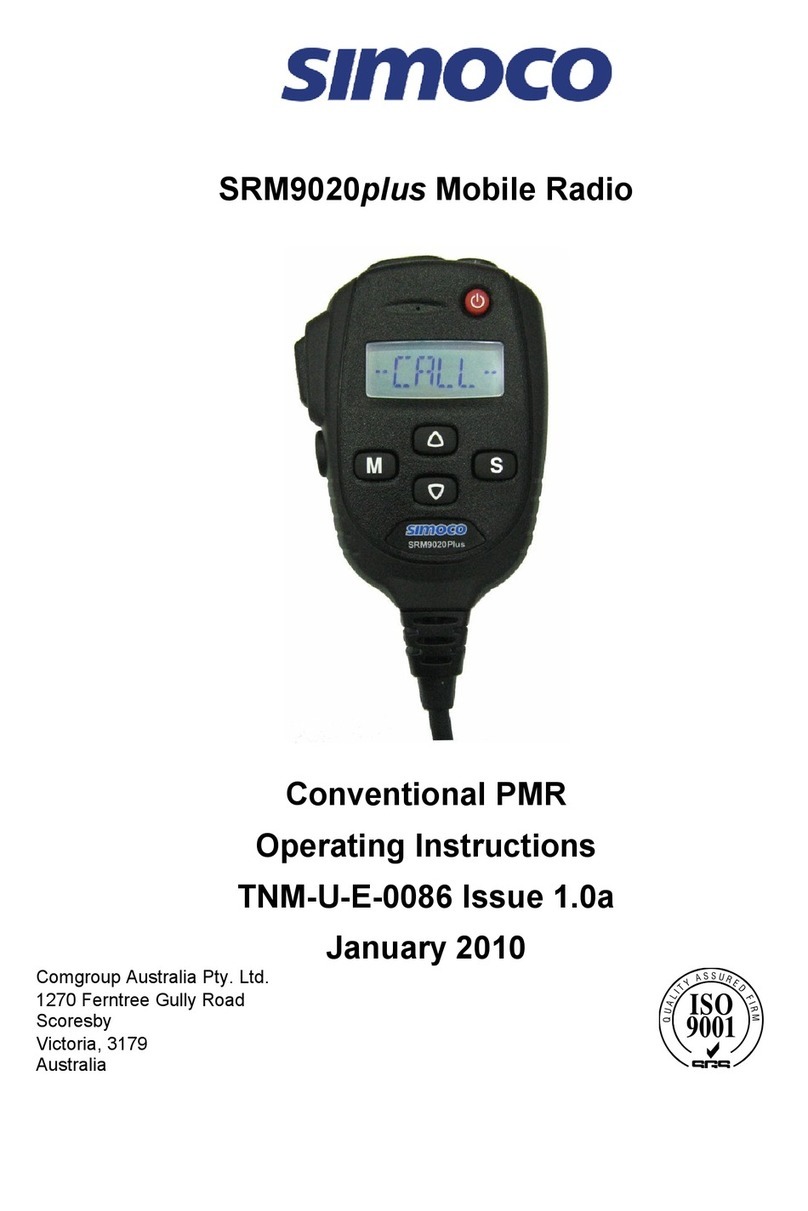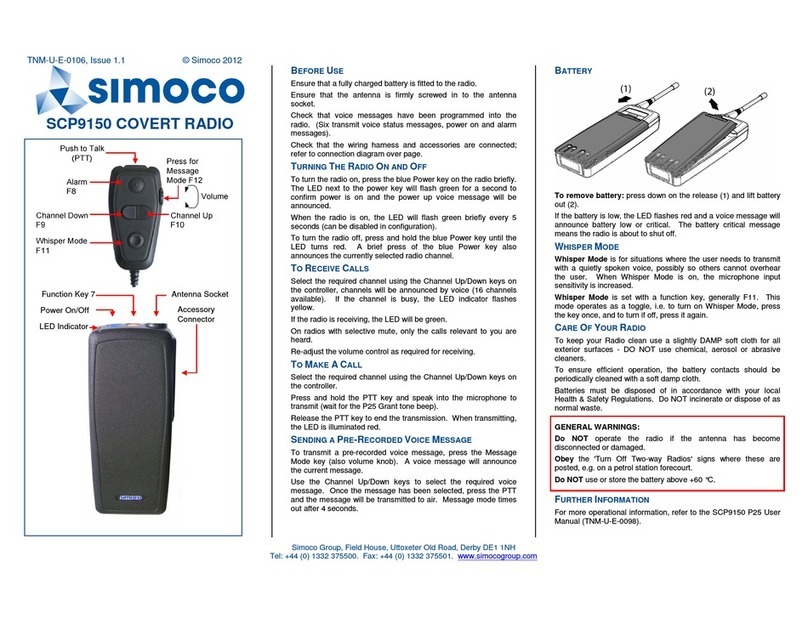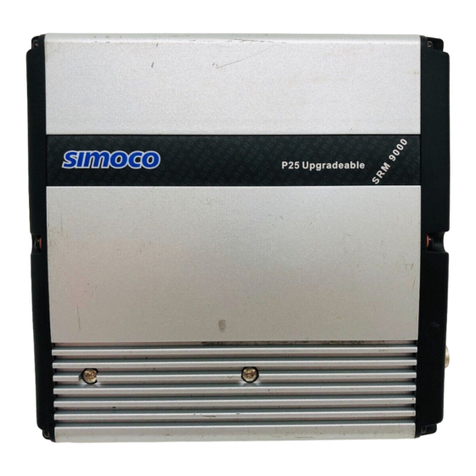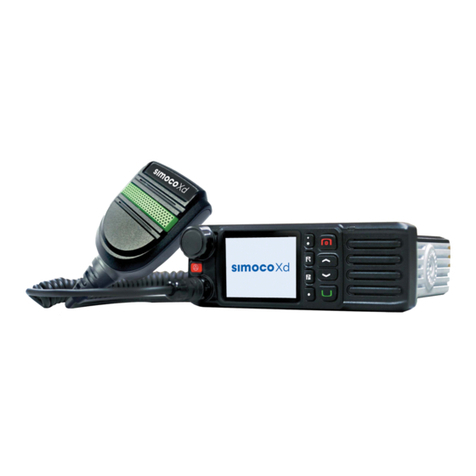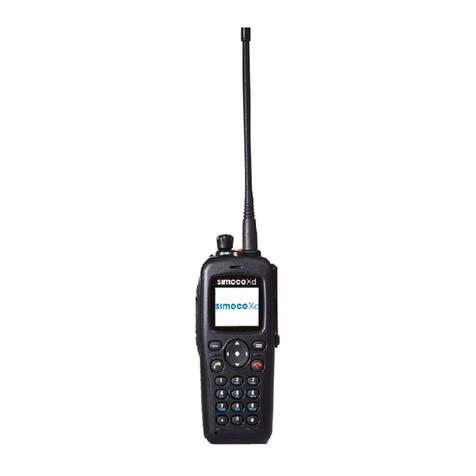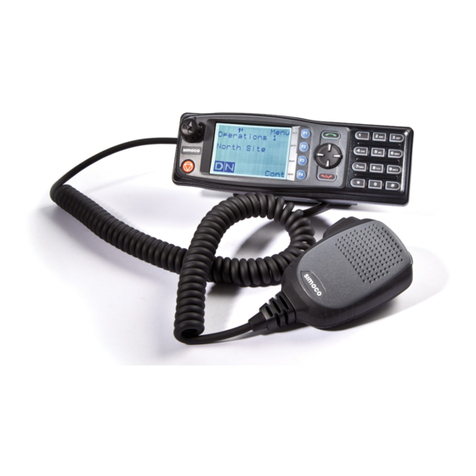
P25 SRM9030/9030
Plus
–OPERATING INSTRUCTIONS TNM-U-E-0094
Oct 15 (Iss. 2.0) Page 5 CONTENTS
5.6.2 Phone Book Edit –To Add a New Entry.................................................................29
5.6.3 Phone Book Edit –To Edit an Existing Entry.......................................................... 30
5.6.3.1 System ID.....................................................................................................30
5.6.3.2 WACN ID......................................................................................................31
5.6.3.3 Unit ID...........................................................................................................31
5.6.3.4 IP Address ....................................................................................................31
5.6.3.5 Name............................................................................................................32
5.7 SETUP MENU.................................................................................................................... 32
5.8 USER OPTIONS MENU ....................................................................................................... 33
5.9 CONTRAST MENU ............................................................................................................. 34
5.10 ALERT VOLUME MENU ...................................................................................................... 34
5.11 RADIO INFORMATION MENU............................................................................................... 35
5.12 MODE MENU..................................................................................................................... 36
5.13 RSSI MENU...................................................................................................................... 37
5.14 CRYPTO KEY MENU .......................................................................................................... 38
5.15 STORED CALLS MENU....................................................................................................... 39
5.15.1 To Call Back a Stored Call .....................................................................................39
5.15.2 To Delete a Stored Call Record.............................................................................. 40
5.16 MESSAGES MENU ............................................................................................................. 40
5.16.1 Messages –Pop-up Menu .....................................................................................40
5.16.2 View Received Messages Screen..........................................................................41
5.16.2.1 Messages View –Pop-Up Menu...................................................................42
5.16.2.2 Messages View –More Screen.....................................................................42
5.16.2.3 Messages Reply –Pop-Up Menu..................................................................43
5.16.2.4 Short Message Reply Screen........................................................................43
5.16.2.5 Text Message Reply Screen .........................................................................44
5.16.3 Send Message (Short or Text) ...............................................................................44
5.16.3.1 Text Message Screen................................................................................... 45
5.16.3.2 Destination Select Pop-Up Menu ..................................................................45
5.16.3.3 Phonebook Entry Selection Screen...............................................................46
5.16.3.4 Enter Unit ID Screen.....................................................................................46
5.17 SCAN EDIT MENU ............................................................................................................. 47
5.17.1 Scan Group Edit Screen.........................................................................................47
5.17.2 Scan Group Add Screen ........................................................................................49
5.18 NO MENU ......................................................................................................................... 49
6COMMON FUNCTIONS AND FACILITIES.......................................................................... 50
6.1 SWITCH ON/SWITCH OFF .................................................................................................. 50
6.2 DEFAULT SCREEN TRUNKED MODE ................................................................................... 50
6.3 VOLUME ADJUSTMENT ...................................................................................................... 50
6.4 RECEIVING (SINGLE CHANNEL SCREEN) ............................................................................ 50
6.4.1 Received Individual Calls .......................................................................................51
6.5 TRANSMITTING.................................................................................................................. 52
6.6 SCAN/VOTE FUNCTIONS .................................................................................................... 52
6.6.1 Scan/Vote Screen..................................................................................................53
6.7 KEYPAD LOCK .................................................................................................................. 53
6.8 ENCRYPTION .................................................................................................................... 54
6.9 EMERGENCY ALARM ......................................................................................................... 54
6.9.1 Receiving Emergency Calls....................................................................................54
6.9.2 Making an Emergency Call ....................................................................................54
